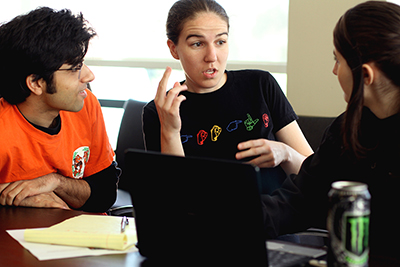
AccessComputing PI Richard Ladner and AccessComputing Partner Kyle Rector recently published an article in the Association for Computing Machinery’s Interactions on Making Your Presentation Accessible. Their advice can help to ensure that presentations are more accessible not only to individuals with disabilities but also those who may be attending a session remotely or who are not native English speakers.
Advice includes the following:
- Minimize the amount of text on slides to keep the focus on what you are saying. Pause to allow individuals a chance to read the slide and read it aloud so individuals who cannot see the presentation know what is on the slide.
- Minimize the number of visuals on slides. Describe images, graphs, and charts for individuals who are visually impaired.
- Use high contrast and take care with colors.
- Avoid or control the speed of animations so they can be described fully.
- Make sure that videos are captioned and audio described. Give a brief description of the video before it starts to help give context.
- Make sure the Q&A period is accessible. If there is a microphone for audience members, be sure they use it. Repeat questions that are asked.
Check out Kyle’s video Making Presentations Accessible for more information.